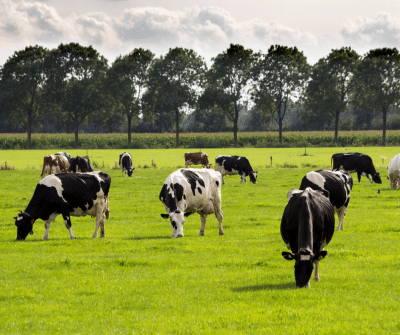In the dairy barn on the University of Minnesota St. Paul campus, rows of dairy cows moo, awaiting their daily milking. The site of a University pilot project, the barn is one of many places in the state that will soon be using a new type of cow antibacterial treatment.
 With “selective dry cow therapy,” farmers can better target cows in need of antibiotic treatment, which can save farmers time and money while also reducing the risk of their cows developing antibiotic-resistant pathogens.
With “selective dry cow therapy,” farmers can better target cows in need of antibiotic treatment, which can save farmers time and money while also reducing the risk of their cows developing antibiotic-resistant pathogens.
“Prices fluctuate, milk revenue goes up [and] it goes down. And there are times when milk prices are really, really low and farmers are just struggling to make ends meet,” Godden said. “So anytime they can cut costs without sacrificing the health of the cow … that improves their economic sustainability and ability to stay profitable, to stay in the industry and not go out of business.”
Cows have a two-month ‘dry period’ where they are not milked, to give time for the cow and her udders to recover between lactation cycles. Because cows are going through physiological changes and experiencing some milk leakage during this period, they are especially vulnerable to bacteria, Godden said.
If bacteria makes its way into the teat, a cow can carry a mammary gland infection into her next milking cycle, she said. This can make her udder irritated and swollen, and cause her to produce less milk or poorer quality milk.
A combination of selective dry cow therapy and teat sealant proves to be equally effective compared to treating all cows with antibiotics, Godden said. Teat sealant is a thick substance that is injected into the cow’s teat and provides a physical barrier to prevent bacteria from entering the udder. It is then milked out of the cow once she starts milking again.
Farmers can use an algorithmic approach or a culture-guided approach in selective dry cow therapy to determine which cows should be given antibiotic treatment. An algorithm-guided method identifies this based on the number of white blood cells in their milk. In the culture-guided method, a milk sample is collected from all four quarters of the cow’s udder and swabbed on a culture plate, which is then incubated for 36-48 hours. If there is bacterial growth on the plate, it shows which quarter of the udder is infected and which cow would benefit from antibiotic treatment.
Using the selective dry cow therapy method, farmers can reduce their antibiotic use by 55%, Godden said. And according to her research, around 60% of Minnesota dairy farmers are good candidates for this treatment.
Minnesota ranks seventh for the most dairy cows in the nation as of 2019, and Godden said it is important that the dairy industry remain a viable and healthy agricultural sector of the state.
“We want to give [farmers] tools to improve antimicrobial stewardship practices and become economically more efficient at the same time. And this kind of does both,” she said.
A nonprofit called the Minnesota Dairy Herd Improvement Association (DHIA) provides milk testing services for about half of Minnesotan dairy farmers who subscribe to their services. Starting Nov. 1, the Minnesota DHIA will give farmers a report to determine which of their dairy cows are at high or low risk for infection and which could benefit from antibiotic treatment.
Although not all farms may be the best candidate for selective dry cow therapy, having this as an option is still beneficial. Some farms with outbreaks of disease or infection may benefit from giving all their cows antibiotics.
Farms that have good data collection practices, trained staff and use teat sealant regularly often have a better chance of implementing selective dry cow therapy successfully, said Erin Royster, an assistant professor in the Department of Veterinary Population Medicine who also worked on the project.
For Jean Amundson, selective dry cow therapy has helped her a great deal. Since implementing the practice almost four years ago on her Wisconsin dairy farm, she has cut her costs in half.
Amundson’s farm was used in one of Godden’s earlier trial sites for the therapy. She said it is nice to see this practice being brought to more farmers through the DHIA.
“It’s just such a good idea,” she said. “You know, just targeting your medicine where it needs to be versus just putting it everywhere and hope for the best.”
Source: The Minnesota Daily




